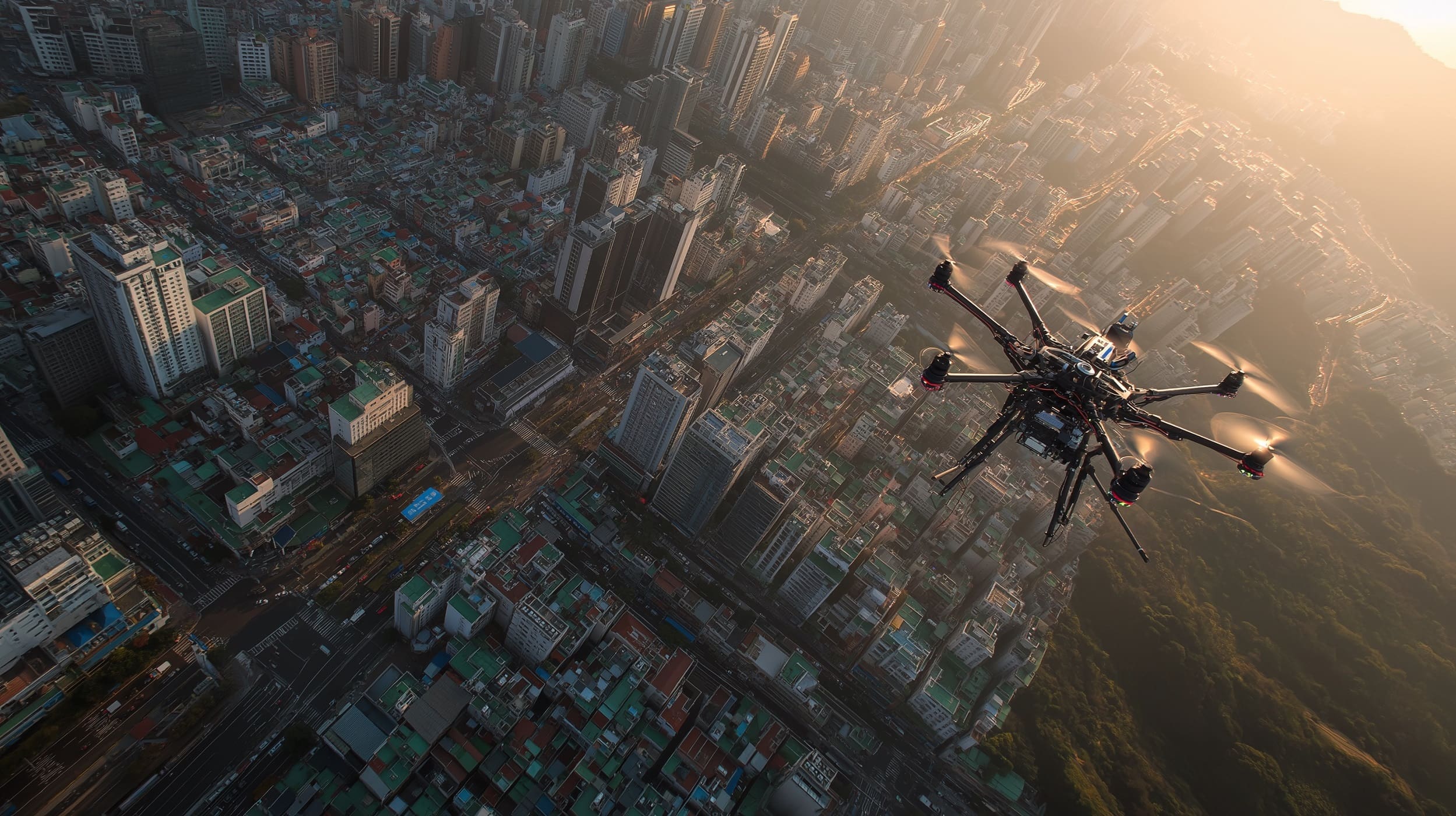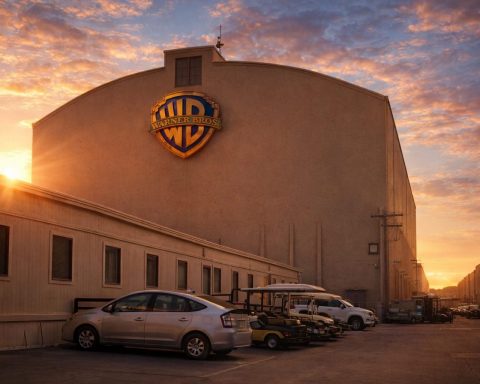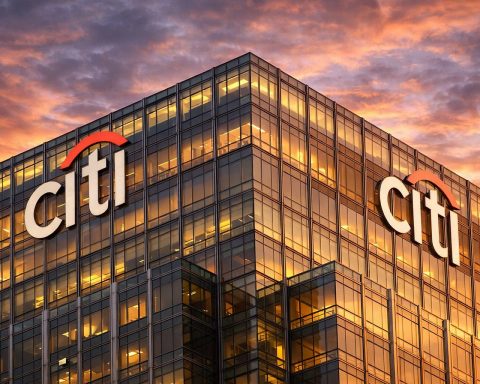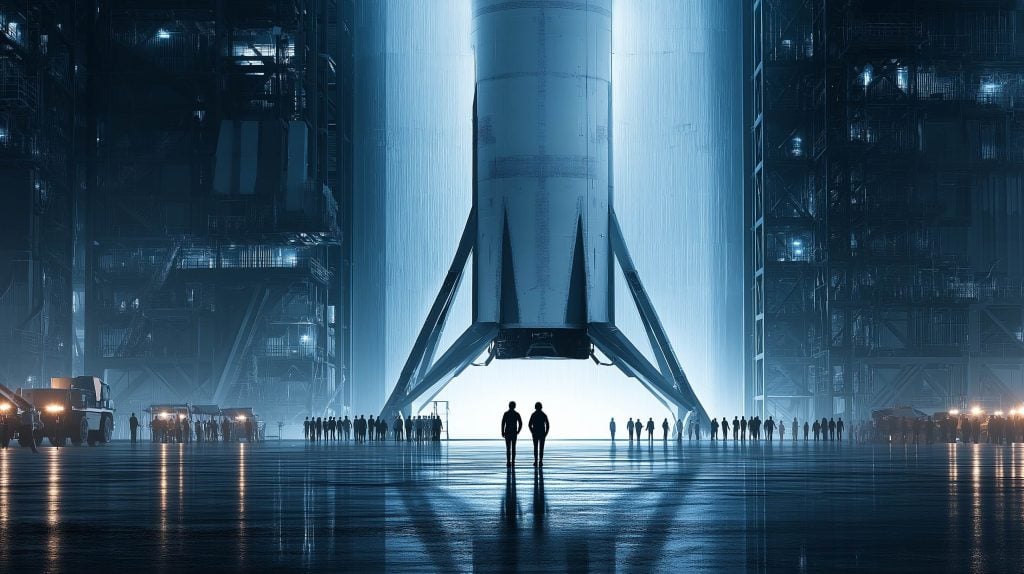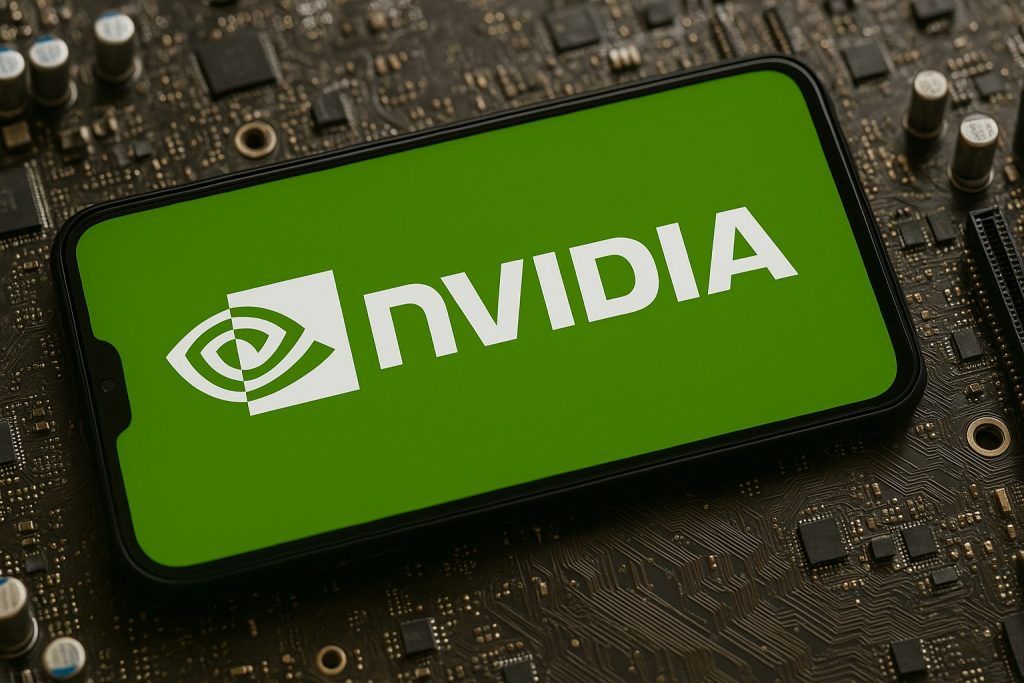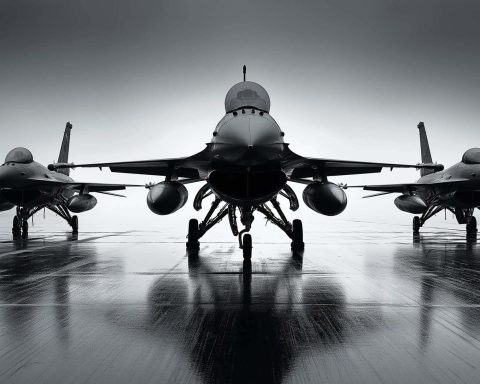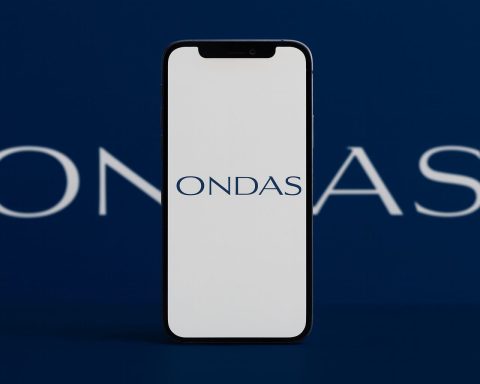- The nationwide altitude limit for drones is 150 meters above ground level, and flying higher requires explicit permission.
- Drones may not fly within 5 nautical miles (about 9.3 kilometers) of any airport or aerodrome without clearance, forming airport control zones.
- No-fly zones include central Seoul around the Blue House (P-73A and P-73B) with the surrounding R-75 buffer, making much of metropolitan Seoul off-limits without authorization.
- Drone operations are daylight-only; night flights require a Special Flight Approval.
- Drones must be operated within visual line of sight at all times, with BVLOS or FPV flights needing a special approval.
- Drones over 250 grams must be registered with MOLIT via the Drone One-Stop portal, after the threshold was lowered in 2021 from 12 kg to 2 kg.
- The minimum liability insurance for registered drones is ₩150 million KRW, and commercial operators must carry it.
- Pilot licensing categories under KOCA include Class IV (250 g–2 kg), Class III (2–7 kg), Class II (7–25 kg), and Class I (>25 kg), with micro-drones ≤250 g exempt from licensing.
- South Korea has 29 designated drone parks (초경량비행장치 비행구역), such as Sihwa, Yangpyeong, Han River at Gwangnaru, Wangsan (Incheon), Daejeon Geumgang Beach, and Yeongsan River in Gwangju.
- Aerial photography requires a Ministry of National Defense permit obtained at least 4 business days in advance via the Drone One-Stop portal, in addition to any airspace permissions.
Overview of Drone Regulations in South Korea
South Korea permits both recreational and commercial drone flights, but strict regulations apply under the Aviation Safety Act and related rules [1]. The Ministry of Land, Infrastructure and Transport (MOLIT) – through the Korea Office of Civil Aviation (KOCA) – oversees drone usage, and all drone pilots (hobbyist or commercial) must follow safety rules. Key points include [2] [3]:
- Altitude limit: Maximum flight altitude is 150 meters (492 ft) above ground level [4]. Flying above 150 m requires prior permission.
- Airport vicinity: No flying within 5.5 km (3.5 miles) of any airport or aerodrome (a 5 nautical mile control zone) without approval [5] [6]. This rule prevents conflicts with manned aircraft.
- No-fly zones: Drones are banned over sensitive areas – e.g. the northern part of Seoul’s city center (around the former Blue House presidential office), military installations (like bases or the DMZ border area), power plants (e.g. nuclear facilities), and other national security sites [7] [8]. Most of central Seoul is effectively a no-fly zone for security reasons [9].
- Daytime only: General drone operations are limited to daylight hours (between sunrise and sunset). Night flights are prohibited unless a special “night flying” approval is obtained [10] [11].
- Visual line-of-sight: You must keep your drone within visual line of sight (VLOS) at all times. Flying beyond what you can see with the naked eye (e.g. beyond the horizon, or in fog/yellow dust conditions) is not allowed without special permission [12] [13].
- Crowd and privacy rules: It is illegal to fly over crowds or densely populated areas or in a manner that endangers people or property on the ground [14] [15]. Pilots must also respect privacy – collecting or filming personal information without consent can lead to penalties under privacy laws [16] [17].
Foreign visitors are allowed to fly drones in South Korea as well, provided they comply with the same regulations [18]. In fact, KOCA explicitly notes that recreational drone flying is legal but must adhere to all rules and airspace restrictions [19]. In the sections below, we break down the requirements for drone registration, pilot licensing, restricted airspace, operational rules, enforcement, and special considerations for foreigners, along with recent updates up to 2025.
Registration and Licensing Requirements
South Korea has implemented a mandatory drone registration and licensing system with requirements varying by drone weight and usage. MOLIT classifies drones as “ultra-light flying devices” and requires both registration of the aircraft and certification of the pilot beyond certain thresholds.
Drone Registration (MOLIT/KOTSA)
All drones over 250 grams must be registered in South Korea [20] [21]. The current rules (strengthened in recent years) are:
- Drones 250 g or less: No registration required (these are considered toys or micro-drones). However, pilots must still follow all safety rules.
- Drones above 250 g (0.25 kg): Registration is mandatory with MOLIT [22]. This applies to both recreational and commercial use. (Previously, only drones heavier than 12 kg had to be registered, but since 2021 the threshold was lowered to 2 kg, and now effectively 250 g for registration and training purposes [23] [24].)
- Business/commercial use:All drones used for commercial purposes must be registered, regardless of weight [25]. Even a sub-250g drone needs registration if used for profit or business activity.
Registration process: Registration is done via the “Drone One-Stop” online portal (drone.onestop.go.kr) managed by the Korea Transportation Safety Authority (KTSA) [26]. The owner must submit an application with details including the drone’s make/model/serial number, a proof of ownership (invoice or purchase receipt), a spec sheet, a photo of the drone, and proof of insurance coverage [27] [28]. After review, a registration certificate and number are issued. The owner must affix the registration number on the drone in a visible manner [29]. Flying a drone without the required registration or failing to mark the registration number can lead to penalties (see Enforcement and Penalties below).
Insurance: When registering a drone, you are required to have liability insurance. The minimum coverage is ₩150 million KRW (approximately $115,000 USD) for any registered drone [30]. This insurance is to cover third-party injuries or damage. (Insurance is mandatory for commercial operators, and while a hobbyist flying a registered drone must obtain it for registration, hobby drones under the registration weight are simply encouraged to have insurance [31].)
Pilot Licensing (Drone Operator Certificates)
Drone pilots in South Korea must obtain an Ultra-Light Vehicle Pilot Certificate if they operate anything beyond the very lightest drones. The Aviation Safety Act classifies drones into weight-based categories for pilot licensing [32]:
- No license required for micro-drones: If your drone’s maximum takeoff weight (MTOW) is 250 g or less, you do not need a drone pilot license [33]. (These tiny drones are exempt from certification requirements, though you must still obey all flight rules.)
- Class IV (Small drones): MTOW over 250 g up to 2 kg. Required training: You must complete a mandatory online education course/test on drone safety [34]. This is a basic course available through the Drone One-Stop platform. Successful completion grants you the Class IV certification to fly drones in this weight range.
- Class III (Medium drones): MTOW over 2 kg up to 7 kg. Required license: You must pass a theoretical knowledge exam and demonstrate at least 6 hours of flight experience (typically via a training program) to obtain a Class III drone pilot license [35]. This involves more in-depth training and testing overseen by KOCA/KTSA.
- Class II (Large drones): MTOW over 7 kg up to 25 kg. Required license: A more advanced certification is required, usually involving additional ground schooling, a written exam, and a practical skills test. Pilots need substantial training; the exact hour requirement is higher (often around 10+ hours of logged flight). Class II covers heavy professional drones (but not ultra-heavy).
- Class I (Very large UAVs): MTOW over 25 kg (up to 150 kg fuel-excluded). Required license: This highest category requires extensive training – typically 20+ hours of flight experience and multiple exams (written and practical) [36]. Essentially, operating a drone in this class approaches the requirements of a manned aircraft pilot due to the risks involved.
Note: All the above licenses are issued by KOCA via designated training/testing centers (often through the Korea Transportation Safety Authority). They ensure pilots understand air law, navigation, meteorology, and operational skills for drones. A pilot license is required for commercial drone operations in any weight category except possibly the very lightest. Hobbyist pilots flying drones >250 g are also subject to the certification rules [37], though in practice a simplified online test for Class IV suffices for most hobby users.
Registration vs. Licensing: Don’t confuse registering your drone with getting a pilot license – both can be required. For example, a 5 kg camera drone used recreationally must be registered (because it’s >2 kg) and the pilot must be licensed for Class III. A 1.5 kg hobby drone must be licensed (Class IV) and as of 2021 it also must be registered (since >2 kg threshold was crossed; if 1.5 kg were purely hobby it wouldn’t need registration under old rules, but new guidance treats >250 g as needing to be in the system) [38]. Essentially, any drone above 250 g will involve some paperwork – at minimum an online course and registration.
The table below summarizes drone categories, registration, and license requirements:
| Drone Weight (Max Takeoff) | Registration Required? | Pilot License Required? | Remarks |
|---|---|---|---|
| ≤ 250 g | No [39] | No [40] | Treated as a toy/micro drone. Must still follow all safety rules. |
| 250 g – 2 kg (Class IV) | Yes [41] | Yes – Online course/test [42] | Basic certification (online) needed for hobbyists. Covers most consumer camera drones (e.g. DJI Mavic series). |
| 2 – 7 kg (Class III) | Yes [43] | Yes – License exam + 6 hr flight experience [44] | Intermediate certification. Common for larger camera rigs, delivery drones, etc. |
| 7 – 25 kg (Class II) | Yes [45] | Yes – Advanced license (extensive training & tests) | Advanced certification. Often agricultural or industrial drones. |
| > 25 kg (Class I) | Yes [46] | Yes – Professional license (20+ hrs training, exams) [47] | Highest certification level. Heavy UAVs in this class are rare and often require case-by-case approval. |
| Any weight (commercial use) | Yes (if used for business) [48] | Yes (commercial license) [49] | All commercial operators must register their drone and hold an appropriate license. No exceptions for weight. |
Table: South Korea drone registration and licensing requirements by weight category. Note that a drone’s “maximum takeoff weight” (MTOW) includes payload. Registration is filed with MOLIT (via KTSA), and pilot licenses are issued by KOCA. Drone business operators (companies using drones commercially) must additionally register as a drone business with MOLIT – foreigners cannot directly register a drone business, so they must partner with a local entity if doing commercial work in Korea [50] [51].
Airspace Restrictions and No-Fly Zones
South Korea imposes strict airspace restrictions to protect sensitive areas and prevent conflicts with other aircraft. Drone pilots are responsible for knowing and avoiding all prohibited or restricted zones:
- Maximum Altitude:150 meters AGL is the limit nationwide for unmanned aircraft [52]. Flying above 150 m (492 ft) requires explicit permission from authorities [53]. This altitude cap ensures drones stay well below manned aircraft cruising levels except near airports where planes are taking off/landing.
- Airports (Control Zones): It is illegal to fly within 5 nautical miles (≈9.3 km) of any airport/airfield without clearance [54] [55]. These airport control zones are typically cylindrical airspaces around major airports (e.g. Incheon, Gimpo, Busan, Jeju, etc.). For military airbases, the control zone can be smaller (often ~3 NM radius, ~5.5 km) [56]. Flying a drone in these zones without permission poses collision risk with aircraft and is strictly prohibited.
- No-Fly Zones (Prohibited Areas): Several areas are designated no-fly due to national security or safety:
- Seoul Special Flight Restrictions: The airspace over central/northern Seoul is heavily restricted. Specifically, zones P-73A and P-73B cover the area around the Blue House (former Presidential residence) and other government complexes – no drone flights are allowed there [57]. Surrounding that is a buffer “R-75” restricted zone covering much of metropolitan Seoul; legally, flights in R-75 may be allowed if other rules are followed, but in practice the military (Capital Defense Command) requires special authorization for any drone flight in greater Seoul due to security concerns [58] [59]. In short, most of Seoul city is off-limits unless you have obtained explicit permission.
- Military Installations: Areas around military bases, installations, and the DMZ (demilitarized zone) are off-limits. This includes border areas near North Korea and places like the vicinity of U.S. bases or ROK army/navy facilities. Flying a drone near these could be seen as a security threat – recent incidents of foreigners flying drones near military sites have led to arrests on suspicion of espionage [60] [61].
- Critical Infrastructure:Power plants (especially nuclear power plants), oil refineries, telecommunication hubs, and other critical infrastructure have protective no-fly radii. These are to prevent accidents or malicious acts. For instance, Korea has explicitly banned drone flights over nuclear reactor sites [62].
- Urban densely populated areas: While not “no-fly zones” by chart, flying over any dense population center or crowded assembly is prohibited for safety. For example, you cannot fly over busy streets, festivals, concerts, or sports stadiums with people present [63] [64]. City downtown areas are effectively off-limits unless empty.
- Government facilities: In addition to Seoul’s Blue House area, other government facilities nationwide (e.g. provincial government complexes, research centers, etc., if designated) may have restricted airspace. Also, areas near national important facilities (perhaps ports, airports which are already covered, or heritage sites as designated) may be restricted.
- Controlled Airspace Permissions: If you need to fly in a restricted area or above altitude limits, you must apply for approval in advance. For no-fly zones related to national defense, permission comes from the Ministry of National Defense (MND); for controlled civil airspace (e.g. near an airport but within allowed operations), permission comes from the regional aviation office (Seoul, Busan, or Jeju Regional Aviation Administration) [65]. In practice, hobbyist pilots are rarely granted permission for these areas. Commercial or government operators can apply via the one-stop portal for a flight waiver, and authorities review safety and security before granting it [66].
- “Drone Parks” (Free Flight Zones): To accommodate hobbyists, South Korea has designated 29 special drone flying zones (초경량비행장치 비행구역) nationwide [67]. In these approved flight parks, you can fly without individual permission or airspace approval. Examples include areas like Sihwa, Yangpyeong, parts of the Han River (Gwangnaru) in Seoul, Wangsan in Incheon, Daejeon Geumgang beach, Yeongsan River site in Gwangju, etc. [68]. These are typically open areas away from airports and cities, marked on official maps (often indicated in pink on the one-stop map). MOLIT plans to expand the number of drone parks since major cities have so many restrictions [69]. If you’re a recreational flyer, it’s highly recommended to use these zones for hassle-free flying.
- Mapping and Apps: Pilots should always check airspace status before flying. The Ready To Fly smartphone app and the Drone One-Stop “map view” service show all no-fly zones, restricted areas, airport radii, etc., on a map [70]. They also provide real-time info like weather, visibility, and sunrise/sunset times. It’s advised to use these tools – for example, the DJI drone app will also enforce many of these no-fly zones by GPS geofencing (your drone may simply refuse to take off in Seoul or near airports without unlocking). Always double-check the current maps since zones can be updated (e.g. when VIP events or temporary restrictions are in place).
Summary: Stay under 150 m altitude, keep well away from airports (≥9.3 km), and do not fly in or over Seoul’s downtown, military or nuclear sites, or any crowded area, unless you have obtained the necessary approvals. Violating airspace restrictions is taken very seriously in South Korea for public safety and security reasons.
Operational Rules and Flight Guidelines
In addition to where you can fly, South Korea enforces how you must operate your drone. The Aviation Safety Act’s Article 129 and related rules list pilot observances that apply to all drone operators (regardless of drone weight or purpose) [71]. Key operational rules include:
- Daylight Operations Only:No night flying is allowed without a special permit [72]. “Night” is defined as from sunset to sunrise. If you want to fly at night (or in truly dark conditions), you must apply for a Special Flight Approval for night operations via the one-stop system [73]. Such approvals typically require demonstrating your drone has adequate lighting and that the operation has a safety plan. Casual hobbyists are expected to pack up by sunset.
- Visual Line of Sight (VLOS): You must maintain direct unaided visual contact with your drone during flight [74] [75]. Flying FPV (first-person-view) via goggles or beyond your eyesight without an observer is not permitted, except with special BVLOS approval. Essentially, you cannot fly so far that you can’t see the drone or in conditions (fog, heavy haze/yellow dust, etc.) where vision is impaired [76] [77]. BVLOS (Beyond Visual Line of Sight) flights are possible for advanced operations (like drone delivery tests), but require obtaining a Special Flight Approval for BVLOS from KOCA [78].
- Weather and Visibility: Do not fly in poor visibility or adverse weather. If there is thick fog, heavy rain, snow, or yellow dust (seasonal dust storms reducing air quality), you must refrain from flying [79]. Good weather with clear visibility is a prerequisite for safe flight.
- Maximum Speed: While not explicitly stated in the above sources, common-sense speed limits apply (you must be able to control the drone). There’s no fixed numerical speed limit in hobby regulations, but reckless high-speed maneuvers that endanger others would violate the general safety clause.
- Distance from People and Property: You should not fly your drone in a way that puts people or property at risk. Specifically, do not fly directly over people who are not involved in the operation, and keep a safe horizontal distance. South Korean guidelines often suggest maintaining at least 30 meters away from bystanders and avoiding events or gatherings (some sources recommend staying 100 m away from large gatherings) [80] [81]. Flying low over someone’s house or crowd can be penalized as an unsafe act. Always yield to manned aircraft – if a helicopter or low-flying plane is nearby, you must give way.
- No Dropping Objects: It is forbidden to drop any objects from a drone that could endanger people or property [82]. Attaching and releasing payloads (unless part of an approved operation, like a certified delivery with safety measures) is not allowed.
- No Dangerous Goods or Weapons: Attaching firearms, fireworks, or hazardous materials to drones is strictly illegal. (This is part of general safety – drones cannot carry anything that can pose a danger if released or if the drone crashes.)
- No Flying Near Emergencies: You should not fly near fire scenes, accident sites, or areas where emergency responders are active, as the drone could interfere with rescue helicopters or police drones.
- No Flying While Intoxicated: Operating a drone under the influence of alcohol or drugs is explicitly prohibited [83]. This is treated similarly to drunk driving in terms of enforcement focus – if caught, you will face penalties.
- Aerial Photography Permission: Notably, taking aerial photos or videos (filming) with a drone in South Korea requires prior permission from the Ministry of National Defense in many cases [84]. This rule often surprises foreign visitors. By law, any aerial photography (especially of the ground) from a drone falls under the jurisdiction of the Defense Ministry due to security concerns [85]. Drone pilots must apply for an Aerial Photography Permit at least 4 business days in advance of the flight [86]. The application is submitted through the drone one-stop portal and forwarded to MND’s Security Policy Division [87]. You need to specify the location, purpose of filming, date, etc. The military will review to ensure you’re not photographing sensitive sites and that security is not compromised. Only once you have this photography permit and any required flight permission for the airspace, can you legally record aerial footage [88]. (Recreational pilots filming landscapes outside sensitive areas do sometimes skip this step, but it is the law – failing to get the permit could lead to confiscation of your drone or legal trouble if caught, especially if you film near a sensitive location. For commercial filming, authorities strictly enforce this requirement [89].)
- Additional Safety Guidelines: Always conduct a pre-flight check of your drone (hardware and battery), avoid flying over private property without permission, and yield right-of-way to any manned aircraft or other drones (if any coordination is needed). South Korea is also testing remote identification systems and drone traffic management (UTM) systems (“K-Drone system”), but as of 2025, Remote ID is not yet mandatory for drones [90]. It’s wise to keep an eye on future regulations as tech evolves.
In summary, fly responsibly and cautiously. The rules boil down to: daytime, line-of-sight, under 150m, away from airports, away from people/crowds, no risky behavior, and no spying. If you need to go beyond any standard limitations (night, BVLOS, restricted area, or filming), make sure to obtain the special approvals in advance. The government has made it clear that drone pilots, even hobbyists, must uphold these safety standards – violations can result in hefty fines [91] [92].
Enforcement and Penalties for Violations
South Korea enforces its drone laws with monetary fines and even criminal penalties. Several provisions of the Aviation Safety Act outline the consequences for non-compliance:
- Violation of Operational Rules: If you break the general safety rules for pilots (for example, flying at night or in a restricted area without permission, flying recklessly over people, etc.), you can be fined up to ₩2 million KRW for each offense [93] [94]. For instance, flying in the Seoul no-fly zone or above 150m without approval would likely incur such a fine. The Korea Herald reports that unauthorized drone flights have disrupted aviation and led to enforcement actions; fines of up to ₩3 million have been cited for flying in no-fly zones or other serious violations [95]. Repeat or severe violations (especially those endangering aircraft) could potentially involve higher penalties or prosecution under other laws.
- Failure to Register a Drone: Operating a drone that meets the registration criteria without having registered it is a punishable offense. Initially, this was subject to up to 6 months imprisonment or ₩5 million fine under the Aviation Safety Act [96]. Recently, authorities have signaled even stricter penalties – some sources indicate fines up to ₩10 million KRW (around $8,500 USD) for flying an unregistered drone [97]. This reflects the government’s increased emphasis on accountability. In short, if your drone is >250g or used commercially, do not skip registration, as getting caught could be very costly.
- Failure to Mark Registration Number: If you have registered your drone but do not label the drone with the issued registration number (or unique ID), you can face a fine of up to ₩1 million KRW [98]. This is to ensure that any drone observed can be identified by authorities.
- Flying Without a License: If you operate a drone for which a pilot license is required (e.g. a 5 kg drone) without having obtained that license, you are essentially operating illegally. This would likely be treated similarly to driving without a license. The exact fine isn’t explicitly stated above, but it would fall under Aviation Safety Act violations. Expect fines in the millions of won, and possibly administrative action (e.g. you could be barred from obtaining a license for a time). It’s safer to assume it’s not allowed at all – enforcement officers have authority to check for your pilot certificate during investigations.
- Unauthorized Aerial Photography: Taking photos or video from a drone without the defense permit (especially in sensitive areas) can lead to serious trouble. If you are caught filming in a restricted zone (e.g. near a military base or the President’s office) without permission, your footage may be confiscated and you could face charges. In one high-profile case, foreign nationals filming a naval base with a drone were arrested and investigated under national security laws [99]. At the very least, an offender would face fines and seizure of equipment; at worst, if authorities believe there was intent to compromise security, it could lead to criminal charges (espionage or violating the Protection of Military Facilities Act). Bottom line: never film strategic locations without a permit.
- Interference with Manned Aircraft: If a drone causes a safety incident with a manned aircraft (for example, flying in airport airspace and causing a near-collision), the operator could face severe penalties, potentially much higher fines or imprisonment under general aviation safety law. While no specific incident is cited here, globally such acts can carry penalties in the tens of thousands of dollars and jail time. South Korean law would treat it seriously as well.
- Miscellaneous: Additional penalties exist for specific infractions (for example, operating a drone business without registration, or manufacturing/importing non-compliant drones). Those are beyond the scope of this summary, but anyone engaging in those activities should consult the detailed regulations.
Enforcement is carried out by several agencies: KOCA’s inspectors, the Regional Aviation Administration offices, local police, and even the military police for sensitive zones. Seoul’s Capital Defense Command actively monitors the skies over Seoul; if an unauthorized drone is detected, they track down the operator [100]. Police have noted an uptick in reports of illegal drone flights and have to divert resources to respond [101]. In practice, if you violate a rule, someone (either a concerned citizen or a monitoring system) may report it. The authorities can locate pilots via drone serial numbers (hence the need for registration/marking) or by physically searching the area.
To avoid penalties: Always register your drone if required, carry proof of your registration and pilot license when flying, and obtain any needed flight or photo permits. Fly only in allowed areas and altitudes. If approached by police or officials while flying, be prepared to land immediately and show your documents. The penalties are significant (fines in the millions of KRW), so it’s simply not worth the risk to break the rules. South Korea’s stance is that safety and security come first, and they do enforce these laws to make an example of violators [102] [103].
For quick reference, here’s a summary of major violations and potential penalties:
| Violation | Penalty (maxima) |
|---|---|
| Flying unregistered drone (when registration required) | Up to 6 months jail or ₩5–10 million fine [104] [105]. |
| Not marking drone with registration ID | Fine up to ₩1,000,000 (₩1 million) [106]. |
| Operating without required pilot license | Fines likely up to ₩1–3 million (and possible suspension of privileges) (subject to Aviation Safety Act enforcement provisions). |
| Violating no-fly zone or altitude limit (no permission) | Fine up to ₩2,000,000 (₩2 million) [107]; in some cases up to ₩3 million [108]. Severe breaches near secure facilities can bring higher charges. |
| Flying at night/BVLOS without special approval | Fine up to ₩2 million (falls under pilot regulations) [109]. |
| Dangerous operation (over crowds, dropping objects, etc.) | Fine up to ₩2 million [110]; liability for any injuries/damages separately. |
| Unauthorized aerial photography of sensitive areas | Potential fines, equipment confiscation, and criminal charges for security violations (case-dependent) [111] [112]. |
| Flying under the influence of alcohol/drugs | Treated as a serious safety violation – fines up to ₩2 million and likely additional consequences (e.g. license suspension) [113]. |
Table: Selected drone law violations and associated penalties in South Korea. (Amounts are in Korean Won. ₩1,000,000 ≈ $770 USD as of 2025.)
Always remember that these penalties can stack – e.g. flying an unregistered drone and in a no-fly zone and at night could theoretically incur multiple fines. Authorities also have discretion to issue lower fines or warnings for minor first-time offenses, but one should not count on leniency.
Regulations for Foreign Operators and Tourists
If you are a foreign tourist or operator looking to fly a drone in South Korea, you are subject to all the same laws described above [114]. There are a few additional considerations to keep in mind:
- General Allowance: Foreign visitors are allowed to fly drones in Korea – there is no blanket ban on non-citizens operating drones [115] [116]. Korean authorities welcome aerial photography for tourism (Korea has many scenic sites) provided you follow the regulations. As DJI’s guidance notes, tourists may fly under MOLIT’s rules just like locals [117].
- Registration for Tourists: If your drone is over 250 g, you are expected to register it via MOLIT. In practice, the online registration (Drone One-Stop) requires a Korean phone number and identity verification (via a resident ID or a phone with a Korean social security number). This can be a hurdle for short-term visitors. Workaround: You may need to purchase a Korean SIM card and get assistance to authenticate on the system [118]. Some travelers report that it’s not possible to register as a tourist because the website requires a resident login. In such cases, consider flying only sub-250g drones (to avoid the registration requirement) or contacting KOCA in advance for guidance. If you cannot register, at the very least carry proof of your drone’s ownership and specs, and be prepared to explain the situation if questioned by authorities.
- Pilot License for Foreigners: While technically the law requires pilot certification for drones >250g, foreign tourists are generally not expected to obtain a Korean drone license for a short visit [119] [120]. Korea does not have a known mechanism for temporarily recognizing foreign drone licenses, and the training/exam process for a Korean license is not feasible for a tourist. Therefore, practically, if you’re visiting, authorities will focus on other compliance (registration, permits, safe flying) rather than your pilot license. (KOCA’s published notes even state a “foreign visitor drone pilot license is not required” in South Korea [121].) However, this assumes you are flying a small drone recreationally. If you plan to do any advanced operation or something commercial as a foreigner, you would need proper Korean licensing or to partner with a local licensed operator.
- Commercial Filming by Foreigners: Regulations become stricter if you are a foreign entity trying to conduct commercial drone operations (e.g. filming a movie, surveying, etc.). Foreign companies or individuals cannot directly register as commercial drone operators in Korea [122] – they would need to hire or collaborate with a Korean-registered drone company that has the necessary business registration, licenses, and insurance. In other words, a tourist or foreign business cannot simply bring a heavy drone and operate a commercial job on their own; Korean law requires a locally accountable entity. If you have a professional project, plan ahead to work with local licensed drone pilots. (For simple hobby photography as a tourist, this is not needed – that falls under recreational use.)
- Aerial Photo Permits for Tourists: The requirement to get an MND photography permit applies to foreigners as well. This is very important – a number of foreigners have run into trouble by flying cameras near places like the Blue House, Government buildings, or military sites. They may not realize a permit is needed. Always assume you do need the aerial photography permission unless you are in a designated drone park or far away from any sensitive area. If unsure, it’s safer not to take footage, or at least consult KOCA. In case you do want to film, you might seek a local Korean speaker’s help to file the online permit request on your behalf (since the portal is in Korean).
- No-Fly Zones & Cultural Sensitivity: Many popular tourist areas (e.g. parts of Seoul, palace complexes, national parks) may be off-limits or require special permission. For example, Seoul’s major tourist spots are within the no-fly zones. Even some cultural heritage sites might forbid drone flights to protect historic structures or visitor experience. Always check local signs – some tourist sites post “no drones” signs explicitly. And always use the map apps to see if your location is clear to fly.
- Hire a Local Guide if Needed: If you are a traveler determined to get drone footage (for instance, a travel vlogger), consider hiring a local drone guide or service. They will know the regulations and can handle permits. As mentioned, foreigners can be added as a “co-pilot” under a local operator’s flight permission if needed [123] [124].
- Language Barrier and Enforcement: Korean law enforcement might not speak much English at the scene. If approached, be polite, land your drone, and show your passport and any documentation you have (registration proof, etc.). You might carry a printout (in Korean) of your one-stop registration if you managed to register, or the permission email. There have been cases of police contacting foreign drone pilots after detecting flights in sensitive areas – often the issue is resolved by educating the tourist, but fines can apply. The Korea Times noted an increase in police resources being used to handle foreign tourists’ unapproved drone flights around the President’s office, which is problematic [125]. So do your homework to avoid causing alarm.
- Drone Rentals: Korea has some drone rental services, but as a foreigner you would still need to abide by the same rules. Rentals might not be common due to regulatory burdens. It’s generally easier to bring your own compliant small drone.
- Customs: It’s legal to bring drones through Korean customs for personal use. Drones are popular in Korea, so you won’t face issues at the airport as long as it’s for hobby/commercial use and not a huge number of units (which would look like importation).
In summary, foreign drone pilots must follow Korean law just like locals. There are no special exemptions, but enforcement will use discretion knowing the constraints tourists face (e.g. not expecting you to have a Korean license). The best practice for tourists is to use a small drone (under 250g if possible), stick to open areas or drone parks, avoid metropolitan Seoul entirely, and always fly safely and respectfully. If you have any doubts or need clarification before your trip, you can contact KOCA (contact info below) – they can sometimes provide guidance in English [126].
Recent Updates and Changes (2024–2025)
Drone legislation in South Korea is evolving as drone use grows. Here are some notable recent updates and trends as of 2024 and 2025:
- Lowered Registration Threshold: Effective January 2021, MOLIT drastically lowered the weight threshold for mandatory drone registration from 12 kg to 2 kg, and introduced the requirement that all drones over 250 g undergo at least basic training [127] [128]. This expansion of the registration net led to a surge in registered drones – by late 2022, over 20,000 drones were on record, compared to just ~900 in 2015 [129]. It has increased oversight of hobbyist drones.
- K-Drone System & UTM: South Korea is investing in UTM (Unmanned Traffic Management) and drone infrastructure. In 2024, MOLIT officially launched the K-Drone Delivery Service in collaboration with 14 municipalities [130]. This project established drone delivery routes, “drone hubs” and real-time monitoring for beyond-visual-line-of-sight delivery flights [131] [132]. Special regulatory approvals were granted to allow BVLOS drone delivery of goods (up to 3 kg payload) to islands and remote areas [133]. This marks one of the first significant uses of drones beyond visual line of sight under controlled conditions in Korea. The Drone Delivery Safety Management Guidelines were issued to standardize these operations [134]. We can expect further integration of drones into logistics, and corresponding regulations to adapt (possibly a new category for autonomous delivery drones, requirements for remote monitoring centers, etc.).
- Drone “Sandbox” and Urban Air Mobility (UAM): The government passed a Drone Promotion Act (often called the Drone Utilization Promotion and Infrastructure Creation Act) a few years ago to foster the drone industry. Under this, certain zones have been used as regulatory sandboxes for testing new drone technologies (e.g. drone taxis, long-range delivery). In 2023–2024, Korea has been actively demonstrating urban air mobility (flying taxis) and advanced drone use-cases at events like the Korea Drone Expo [135] [136]. While these are not yet everyday reality, the legislative framework is being prepared (e.g. certification standards for larger drones, corridors for UAM).
- Remote ID (Future): As of early 2025, South Korea has not implemented a Remote ID requirement for drones [137]. However, given the global trend (US and EU now require most drones to broadcast identification), Korea is likely assessing similar rules. The one-stop system and registration scheme lay groundwork for remote ID if introduced. There’s industry discussion of requiring ID broadcast for drones above 250g in coming years, but no regulation is in force yet. Pilots should keep an eye on KOCA announcements on this front.
- Increased Penalties and Enforcement (2023): In April 2023, amendments to the Aviation Safety Act enforcement rules included some new provisions aimed at drones. Notably, authorities can now require an ID tag on any cargo carried by a drone when granting flight permissions (to clearly identify the owner) [138]. Also, following some security breaches (e.g. North Korean drones entering Seoul’s airspace in 2022), the defense authorities have tightened surveillance and reaction protocols. By 2024, the Capital Defense Command began more aggressive tracking of unauthorized drones in the Seoul area, and the National Assembly discussed harsher punishments for drone-based espionage or incursions. This led to the instance in 2025 where foreign nationals were arrested under espionage charges for illegal drone filming [139]. So, the climate is one of zero tolerance for drones in sensitive areas.
- Growing Drone Infrastructure: The number of drone flight zones (parks) is being increased to accommodate hobbyists [140]. Also, local governments have been hosting drone events and training. For example, Incheon has a successful drone patrol program for public safety (launched 2023) [141]. The government is funding R&D into special drones (firefighting drones, bird-control drones near airports [142], etc.). These efforts often come with updated guidelines (e.g. how emergency drones can operate even during no-fly hours with permission).
- 2024 Expo and Public Awareness: The 2024 Korea Drone Expo showcased many innovations and the government’s commitment to expanding drone use responsibly [143]. Public awareness campaigns (like the KOCA Q&A and infographics in 2022) have continued, educating citizens on the need to register drones and fly safely. The Q&A from MOLIT (updated July 2022) which we referenced is part of that outreach – it had millions of views, indicating strong interest and compliance push [144].
- Future Legislation: Looking ahead, South Korea is likely to align more with international standards. This could include introducing a tiered “Open” category for drones (similar to EU rules) and simplifying permits via automated systems (akin to the FAA’s LAANC system). Already in 2020, discussions were noted about the discrepancy between MOLIT’s rules and the Defense Ministry’s stance in the Seoul restricted zone [145]. By 2025, we may see a more unified policy where a single application handles both MND and MOLIT approvals for a flight. There is also talk of expanding the weight classes or adjusting the sub-2kg category if needed as drone technology advances.
In conclusion, 2024 and 2025 have seen South Korea embrace more advanced drone operations (like delivery) while also tightening safety and security oversight. If you are operating in Korea, make sure to stay updated via KOCA’s website or notices – regulations can change, and new pilot requirements (like remote ID or additional training) could arise as the drone landscape develops. The trend is that Korea is pro-drone innovation but very cautious about safety, so expect meticulous rules to continue.
Relevant Authorities and Contact Information
Several government bodies are involved in regulating and managing drones in South Korea. Below are the key authorities and resources for drone operators:
- Ministry of Land, Infrastructure and Transport (MOLIT) – MOLIT is the primary ministry responsible for civil aviation and thus drone policy. Within MOLIT, the Aviation Policy Bureau sets regulations, and the Aviation Safety Division handles drone safety oversight. Website: molit.go.kr. (Most MOLIT resources are in Korean, but some summaries are available in English on their site.)
- Korea Office of Civil Aviation (KOCA) – KOCA is an office under MOLIT that acts as the national aviation authority (similar to the FAA in the US). KOCA’s responsibilities include pilot licensing, airspace management, and enforcement of aviation regulations [146]. KOCA is the go-to regulator for drone pilots. Contact KOCA:
- Korea Transportation Safety Authority (KOTSA) – This agency (한국교통안전공단) has a Drone Management Office that administers drone registrations and the one-stop drone service on behalf of MOLIT [149]. KOTSA took over the registration function from regional aviation offices in late 2020 [150]. They also manage drone pilot exams and certification issuance. Contact: KOTSA Drone Department via the Drone One-Stop call line at ☎ 1577-0990 (Korean language service).
- Drone One-Stop Portal:drone.onestop.go.kr is the integrated online platform for drones [151]. Here you can:
- Register your drone (submit registration applications) [152].
- Apply for flight approvals in controlled airspace.
- Apply for special flight permissions (night/BVLOS) [153].
- Apply for the aerial photography permit (the system forwards it to MND) [154].
- View interactive maps of no-fly zones and flight zones [155].
- Access training materials and the online pilot course/exam.
- Regional Aviation Offices: There are three regional offices of MOLIT/KOCA that handle on-the-ground oversight:
- Seoul Regional Aviation Administration – covers Seoul, Gyeonggi, Incheon, Daejeon, Chungcheong provinces, Sejong, and Jeollabuk-do [157].
- Busan Regional Aviation Administration – covers Busan, Daegu, Ulsan, Gwangju, Gyeonggi-do, Gyeongsang (North and South), Jeollanam-do [158].
- Jeju Regional Aviation Administration – covers Jeju Island [159].
- Seoul office (in Gimpo): ☎ +82-32- (different sections).
- Busan office: ☎ +82-51- ….
- Jeju office: ☎ +82-64- ….
- Ministry of National Defense (MND) – The Defense Ministry, specifically the Defense Intelligence Headquarters – Security Policy Division, handles approvals for aerial photography and any drone flight in military sensitive airspace [160] [161]. While they don’t have a public-facing drone unit for hobbyists, any requests for filming go through them. They coordinate with the Capital Defense Command for the Seoul area (which can be contacted via the one-stop system or directly for R-75 zone issues). If you needed to, you could contact the Capital Defense Command for questions about Seoul drone flights (they’ve indicated foreign embassies and others sometimes coordinate via them).
- Law Enforcement: The National Police Agency (and Korean National Police in Seoul) may be involved if there’s a violation or security incident. There isn’t a specific contact to proactively ask about drone rules – instead, KOCA is your point of contact – but in an emergency (like if your drone is lost or causes damage) you’d obviously involve the police (dial 112 in Korea).
- Additional Resources:
- Shin & Kim UAV Guide: A law firm “Shin & Kim” published an English summary of Korean drone laws (covering registration, flight approval, operation license) [162], which can be useful.
- UAV Coach and Drone Laws websites: These provide simplified summaries and have KOCA contact listed [163]. For instance, UAV Coach lists KOCA’s email/phone as given above and notes that if in doubt, reaching out to KOCA before traveling is wise [164].
- Drone Map Apps: Apart from the government’s app, private apps like AirMap or DJI’s Geo Zone map incorporate Korean airspace restrictions. DJI’s “Flying Tips for Korea” page is also a quick reference for basic rules [165] [166].
In case of any uncertainty, KOCA (MOLIT) should be your first contact – they regulate civil drones and can clarify procedures in English to some extent. For example, KOCA’s email (fsdiv01@korea.kr) can be used to ask questions; give them time to respond. Always keep records of any permissions granted (print or screenshot emails/approvals from the portal) when you go out to fly.
Key Contacts:
- KOCA (Korea Office of Civil Aviation) – fsdiv01@korea.kr / +82-44-201-4251 [167]
- Drone One-Stop Helpdesk (KOTSA) – 1577-0990 (Korean) [168]
- Seoul Aviation Office (for flight permission) – ☎ +82-32-740-2137 (for example, one of the numbers for flight plan approval section).
- MND Drone Permit Section – (via one-stop portal or Defense Security Policy Division, no public phone; usually handled online).
- Emergency (incident involving a drone) – Police 112 or Fire 119.
Finally, always refer to official materials when preparing for drone operations in South Korea. MOLIT/KOCA’s guidelines [169] [170] and the Aviation Safety Act (항공안전법) provide the legal foundation. By staying informed and cautious, you can enjoy flying your drone in South Korea’s beautiful locales without running afoul of the law.
Sources:
- MOLIT/KOCA Drone Policy Q&A (2022) [171] [172] [173]
- South Korea Aviation Safety Act & Enforcement Rules (via law.go.kr) [174] [175]
- KOCA/Drone One-Stop official publications [176] [177]
- UAV Coach – Drone Laws in South Korea (2023) [178] [179]
- Drone-laws.com – South Korea Drone Laws (2025) [180] [181] [182]
- DJI – Republic of Korea Flying Tips [183] [184]
- Korea Herald / Unmanned Airspace reports on drone regulations [185] [186]
- Sulman Khan, Medium – Drone Laws in Korea (2024) [187] [188]
- Unmanned Airspace – Launch of K-Drone Delivery (2024) [189] [190]
- South China Morning Post – Security incidents with drones (2025) [191]
References
1. drone-laws.com, 2. drone-laws.com, 3. drone-laws.com, 4. drone-laws.com, 5. drone-laws.com, 6. drone-laws.com, 7. drone-laws.com, 8. drone-laws.com, 9. uavcoach.com, 10. www.molit.go.kr, 11. drone-laws.com, 12. drone-laws.com, 13. drone-laws.com, 14. drone-laws.com, 15. drone-laws.com, 16. drone-laws.com, 17. drone-laws.com, 18. drone-laws.com, 19. drone-laws.com, 20. drone-laws.com, 21. sulmanofficial.medium.com, 22. drone-laws.com, 23. www.molit.go.kr, 24. drone-laws.com, 25. www.molit.go.kr, 26. www.molit.go.kr, 27. www.molit.go.kr, 28. sulmanofficial.medium.com, 29. www.molit.go.kr, 30. drone-laws.com, 31. drone-laws.com, 32. escholarship.mcgill.ca, 33. escholarship.mcgill.ca, 34. drone-laws.com, 35. drone-laws.com, 36. drone-laws.com, 37. escholarship.mcgill.ca, 38. drone-laws.com, 39. drone-laws.com, 40. escholarship.mcgill.ca, 41. drone-laws.com, 42. drone-laws.com, 43. www.molit.go.kr, 44. drone-laws.com, 45. www.molit.go.kr, 46. www.molit.go.kr, 47. drone-laws.com, 48. www.molit.go.kr, 49. drone-laws.com, 50. drone-laws.com, 51. drone-laws.com, 52. drone-laws.com, 53. drone-laws.com, 54. drone-laws.com, 55. drone-laws.com, 56. www.molit.go.kr, 57. drone-laws.com, 58. www.unmannedairspace.info, 59. www.unmannedairspace.info, 60. www.scmp.com, 61. www.scmp.com, 62. www.droneregulations.info, 63. drone-laws.com, 64. drone-laws.com, 65. drone-laws.com, 66. drone-laws.com, 67. drone-laws.com, 68. drone-laws.com, 69. drone-laws.com, 70. www.molit.go.kr, 71. drone-laws.com, 72. drone-laws.com, 73. www.molit.go.kr, 74. drone-laws.com, 75. drone-laws.com, 76. drone-laws.com, 77. drone-laws.com, 78. www.molit.go.kr, 79. drone-laws.com, 80. sulmanofficial.medium.com, 81. sulmanofficial.medium.com, 82. drone-laws.com, 83. drone-laws.com, 84. drone-laws.com, 85. drone-laws.com, 86. drone-laws.com, 87. www.molit.go.kr, 88. www.molit.go.kr, 89. www.molit.go.kr, 90. drone-laws.com, 91. drone-laws.com, 92. drone-laws.com, 93. drone-laws.com, 94. drone-laws.com, 95. www.koreaherald.com, 96. www.molit.go.kr, 97. sulmanofficial.medium.com, 98. www.molit.go.kr, 99. www.scmp.com, 100. www.unmannedairspace.info, 101. www.facebook.com, 102. sulmanofficial.medium.com, 103. drone-laws.com, 104. www.molit.go.kr, 105. sulmanofficial.medium.com, 106. www.molit.go.kr, 107. drone-laws.com, 108. www.koreaherald.com, 109. drone-laws.com, 110. drone-laws.com, 111. www.scmp.com, 112. www.molit.go.kr, 113. drone-laws.com, 114. www.dji.com, 115. www.dji.com, 116. drone-laws.com, 117. www.dji.com, 118. drone-laws.com, 119. drone-laws.com, 120. drone-laws.com, 121. drone-laws.com, 122. drone-laws.com, 123. drone-laws.com, 124. drone-laws.com, 125. www.facebook.com, 126. uavcoach.com, 127. www.molit.go.kr, 128. drone-laws.com, 129. www.unmannedairspace.info, 130. www.unmannedairspace.info, 131. www.unmannedairspace.info, 132. www.unmannedairspace.info, 133. www.unmannedairspace.info, 134. www.unmannedairspace.info, 135. www.molit.go.kr, 136. dronevideos.com, 137. drone-laws.com, 138. www.investkorea.org, 139. www.scmp.com, 140. drone-laws.com, 141. www.mcst.go.kr, 142. www.unmannedairspace.info, 143. www.molit.go.kr, 144. www.molit.go.kr, 145. www.unmannedairspace.info, 146. uavcoach.com, 147. uavcoach.com, 148. drone-laws.com, 149. www.molit.go.kr, 150. www.molit.go.kr, 151. www.molit.go.kr, 152. drone-laws.com, 153. www.molit.go.kr, 154. drone-laws.com, 155. www.molit.go.kr, 156. drone-laws.com, 157. www.molit.go.kr, 158. www.molit.go.kr, 159. www.molit.go.kr, 160. www.molit.go.kr, 161. drone-laws.com, 162. www.shinkim.com, 163. uavcoach.com, 164. uavcoach.com, 165. www.dji.com, 166. www.dji.com, 167. uavcoach.com, 168. www.molit.go.kr, 169. drone-laws.com, 170. drone-laws.com, 171. www.molit.go.kr, 172. www.molit.go.kr, 173. www.molit.go.kr, 174. escholarship.mcgill.ca, 175. drone-laws.com, 176. drone-laws.com, 177. drone-laws.com, 178. uavcoach.com, 179. uavcoach.com, 180. drone-laws.com, 181. drone-laws.com, 182. drone-laws.com, 183. www.dji.com, 184. www.dji.com, 185. www.unmannedairspace.info, 186. www.unmannedairspace.info, 187. sulmanofficial.medium.com, 188. sulmanofficial.medium.com, 189. www.unmannedairspace.info, 190. www.unmannedairspace.info, 191. www.scmp.com
